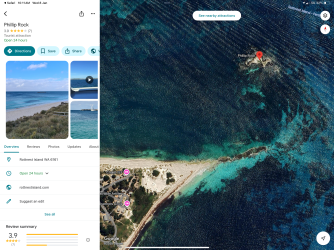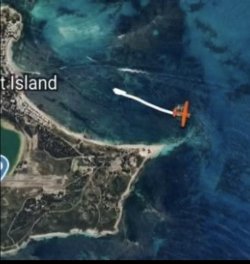WA Today
‘Insufficient speed’: Aviation expert weighs in on Rottnest seaplane tragedy
Aviation experts have weighed in on what might have caused a seaplane to crash into the water just after take-off at Rottnest Island on Tuesday, killing three people on board.
Footage taken by holidaymakers on the island shows the Swan River Seaplane-run Cessna 208 wobbling after take-off just before 4pm, before it nosedived into the water about 600 metres offshore.
Upstream Aviation director Tim Collins has viewed footage of the tragedy taken by onlookers, and told this masthead it did not appear to be a mechanical failure.
“It looks like insufficient speed at rotation leading to a stall,” he said.
“It is common for one wing to stall before the other which leads to the left wing drop you can clearly see in the video.”
The plane’s 34-year-old pilot was on Wednesday confirmed among those that died in the incident.
“Why the pilot rotated early will be key to understanding this accident,” Collins said.
“Was the pilot trying to avoid an obstacle? Witness statements will be crucial to the investigation as will video footage since this type of aircraft is not required to carry a coughpit voice recorder or a flight data recorder.”
Flight records show the Cessna plane had recently arrived in WA from New South Wales, and had begun scenic flights on January 1.
Collins said that while all aircraft differed, a pilot would usually undergo training to fly a specific aircraft type.
Was wind a factor?
Bureau of Meteorology daily recorded observations shows the wind speed at Rottnest Island at 3pm on Tuesday was 48km/h, the highest it had been recorded at that time in the last week, but some wind gusts of 69km/h had been recorded at other times.
“It did look a little bit a little bit choppy, maybe that’s why he rotated a little bit early,” Collins said.
“But it looks like he was close to being into wind. Whether he saw something in the water, whether there’s a rock, there’s an obstacle, whether there’s something he tried to get out of the water early, I just don’t know.”
Collins said lack of forward speed has caused the plane to nosedive.
“He rotated too early and the aircraft didn’t have enough forward speed and when you don’t have enough forward speed, the airflow over the wing is no longer laminar, it becomes turbulent in the air,” he said.
“People think that air goes under the wing to make an airplane fly. Actually, an airplane is almost sucked up into the air.
“The air going over the top of the wing is fast, and it creates low pressure which allows the aircraft to climb.
“So once you’ve got any deterioration in the quality of the air going over the wing, which could be caused by insufficient speed, too much angle of attack, it gets turbulent, then you lose lift, and that’s when you get a stall.”
Officers from the Australian Transport Safety Bureau are expected to arrive at the island on Wednesday to investigate what went wrong.
Investigators would speak to the four remaining survivors and any other witnesses, and would collect relevant recorded information including available flight tracking data, as well as pilot and aircraft maintenance records, and weather information.
Two parts of the plane have been recovered. The pontoon was found on a beach a couple of kilometres from the crash site, and police took another piece of the wreckage to a forensic holding yard.
Collins said the Cessna 208 Caravan was one of the most popular and safest planes of its type.
“The Caravan is certified for and regularly configured for float plane operations. It is also certified to fly single engine IFR and is used for cargo operations in all legal weather conditions in the USA day and night,” he said.
“It is powered by a Pratt and Whitney PT6 engine, the family of which has logged half a billion flight hours.”




















